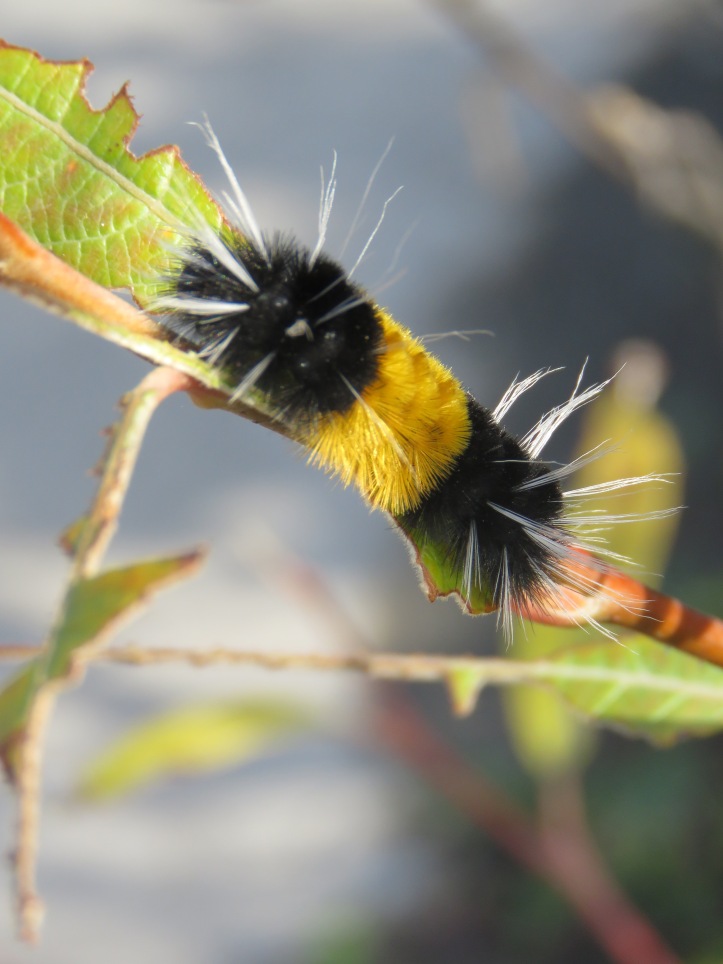Patti at P.A. Moed set this week’s challenge encouraging us to think about how we frame our shots and get closer to our subjects. Here are my offerings.
I shot these oyster catchers at Lyall Bay in Wellington last weekend. Nothing is lost by getting closer and I know which picture I prefer.


Getting close to the log cabin shows the detail and workmanship. Bow Lake, Canada.

Woolly Bear caterpillars were all over the footpaths, squashed on the roads and munching on roadside weeds in Skagway, Alaska in September. About an inch or 2 1/2 centimeters long they seemed single minded in their migration.
I found this interesting description on the Alaska Department of Fish and Game’s website.
Woolly bear caterpillars are the final larval stage of the spotted tussock moth, part of a larger group known as tiger moths. The caterpillar hatches from an egg, and the tussock moth caterpillar goes through five stages as it grows, these stages are called instars. The black and orange banded caterpillar is the fifth and final instar, and the only one with this distinct coloration. So these small black caterpillars don’t look like woolly bears most of the time. In this final instar, the caterpillars are preparing to overwinter in a cocoon. They’re on the move, looking for a good place, so they attract attention. Once the cocoon is built they will pupate inside and overwinter. Next spring they will emerge as adults.
In most temperate climates, caterpillars become moths within months of hatching, but in the north the summers are short, so the Woolly Bear must feed for several summers, freezing each winter before finally pupating. Some are known to live through as many as 14 winters.
Love the oyster-catchers, and thanks for sharing the information about those caterpillars — amazing.
LikeLiked by 1 person
Thanks Su.
LikeLiked by 1 person
Fabulous examples of filling the frame. I really like your caterpillar and oyster catcher shots. I’m glad you joined us!
LikeLiked by 1 person
Thank you Patti. I’m glad too.
LikeLiked by 1 person
Wow, I always loved the “wooly” catapillars but I never knew that much about them.
LikeLiked by 1 person
Cute and fascinating aren’t they.
LikeLike
Loved your woolies in this set!
LikeLiked by 1 person
Thank you Tina. Easy to love them, isn’t it.
LikeLike
I like your photos, the cabin is my favorite. Noteworthy info on that woolly bear.
LikeLiked by 1 person
Thanks John. I like that one too. And bugs fascinate me.
LikeLiked by 1 person